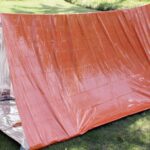
We’ve all either seen it in person or on TV – a supermarket with bare shelves right before a storm. Shortly before those shelves were emptied, long lines filled the store. Shopping carts overflowing with food and other supplies that wouldn’t typically be part of a normal grocery trip. People running around like headless chickens trying to scoop up anything they can pick up. It’s a scene we’re all to familiar with – panic buying.
I’m not quite sure where the mindset to panic buy came from, but it definitely reared its ugly head during the early part of the pandemic. Most would agree with the shortages of Lysol and hand sanitizer, but toilet paper? Seeing people on Instagram fighting over rolls of toilet paper just highlights the issue with panic buying.
It’s Not Necessary
Most times the perceived disaster/emergency is not nearly as bad as anticipated. In fact, it has been shown that after most weather related storms, things are somewhat back to normal within a week. It’s also been discussed on multiple news outlets that the extra food that is purchased most times go bad. So why waste food that can be best used by someone truly in need? Why assume the worst when, with proper planning, emergency situations can be handled?
Instead of Panic Buying, Plan
On this site, we have highlighted the importance of advance planning. Preparing for storms is no different. Here are some tips to keep in mind:
- Before going to the store, make a list of items that you would realistically need
- Buy essential items needed for the next several days
- Avoid buying items just because you see others buying it
- Do not procrastinate! As much as we will be mindful of our purchases, we cannot expect that of others.
- Aim for non-perishable items.
With proper planning, we will have all the items we need for an upcoming storm. If we don’t, having emergency provisions already at home will avoid last minute panic.



